Michele Placido plays Cardinal Del Monte in the film The Shadow of Caravaggio | Photo: © Luisa Carcavale
In the shadow of the statue of Giordano Bruno in Campo de ‘Fiori, fed by the wind of the ’68 that delivered the authentic world of the villages to Pasolini’s cinema, the events of the philosopher friar drew dreams of future projects that they had in the mind of a young Michele Placido. as a frame that Rome in turmoil theater of the world.
Three centuries earlier, in that same Rome of revolts and revolutions, Caravaggio, a contemporary of Giordano Bruno, had also sought his space in the world, finding it in the Suburra, among prostitutes, thieves, vagabonds, transfigured on the canvas into immortal saints and madonnas.
“It makes me smile very much that Caravaggio in his paintings has managed to transform men and women of the Suburra into saints and madonnas still venerated in churches today. Many of those who admire his masterpieces do not know that they are not faced with fictional characters, but with men and women who really existed. Six years ago with his friend the screenwriter Sandro Petraglia, with whom we had already written Criminal novel and other works, we have decided to face this impossible dream ”.
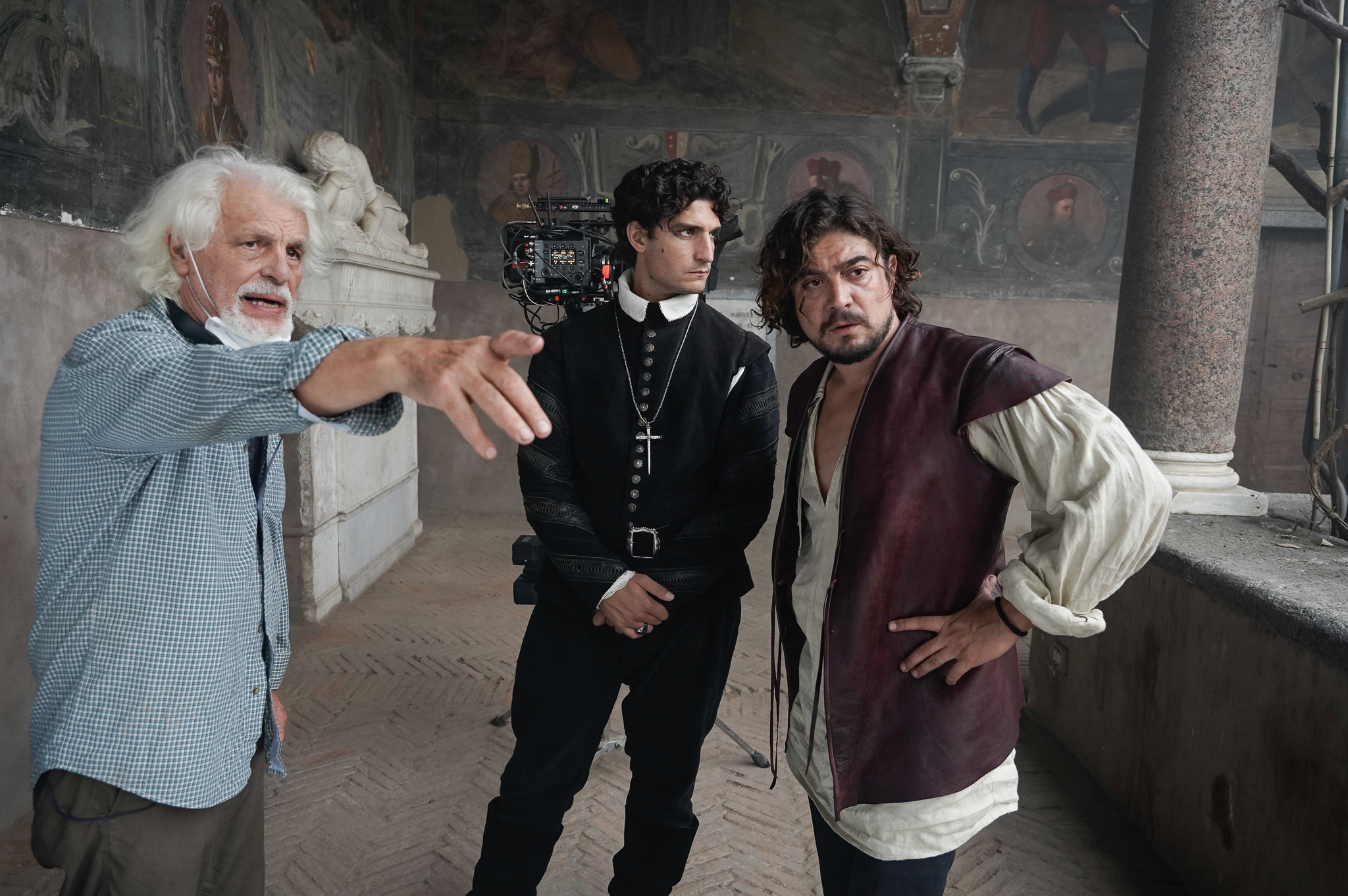
Michele Placido, Riccardo Scamarcio (Caravaggio) and Louis Garrel (the Shadow) in Caravaggio’s L’Ombra | Photo: © Luisa Carcavale
The impossible dream that Michele Placido talks about, while we reach him on the phone in one of the places where he is busy promoting his film, is called The Shadow of Caravaggioan Italian-French co-production signed by Goldenart Production with Rai Cinema and for France Charlot, Le Pacte and Mact Production which will arrive in theaters on November 3.
The film, devoid of scholastic or academic patinas, is an unusual journey into the intricate existence of Michelangelo Merisi, told in its profound contradictions and in the darkness of its impenetrable torment.
If he were a contemporary of ours today, this Caravaggio would probably be a pop artist based in New York or London, his pants as tight as a pair of jeans, his shoes muddy, a shirt soiled with all paint. And he himself would be a canvas, color encrusted on his hands, under his nails, between his beard, his gaze at the women of his life: a marquise, one of the most famous prostitutes in Rome, and another ready to lend her face to one of his greatest masterpieces.
From his contemporary laboratory projected into the future, Caravaggio 2.0 would be a man obsessed with the desire to tell through his painting a revolutionary religious vision, which originates in the street, in a sort of ante litteram neorealism.
While talking about his film Placido involves us in the dance that leads from the big screen to “his” theater, as when he interprets, on the other side of the line, some pages of Yannick Haenel or when he proposes some lines from Cardinal del Monte. Following the genesis of the film thus becomes a double pleasure.
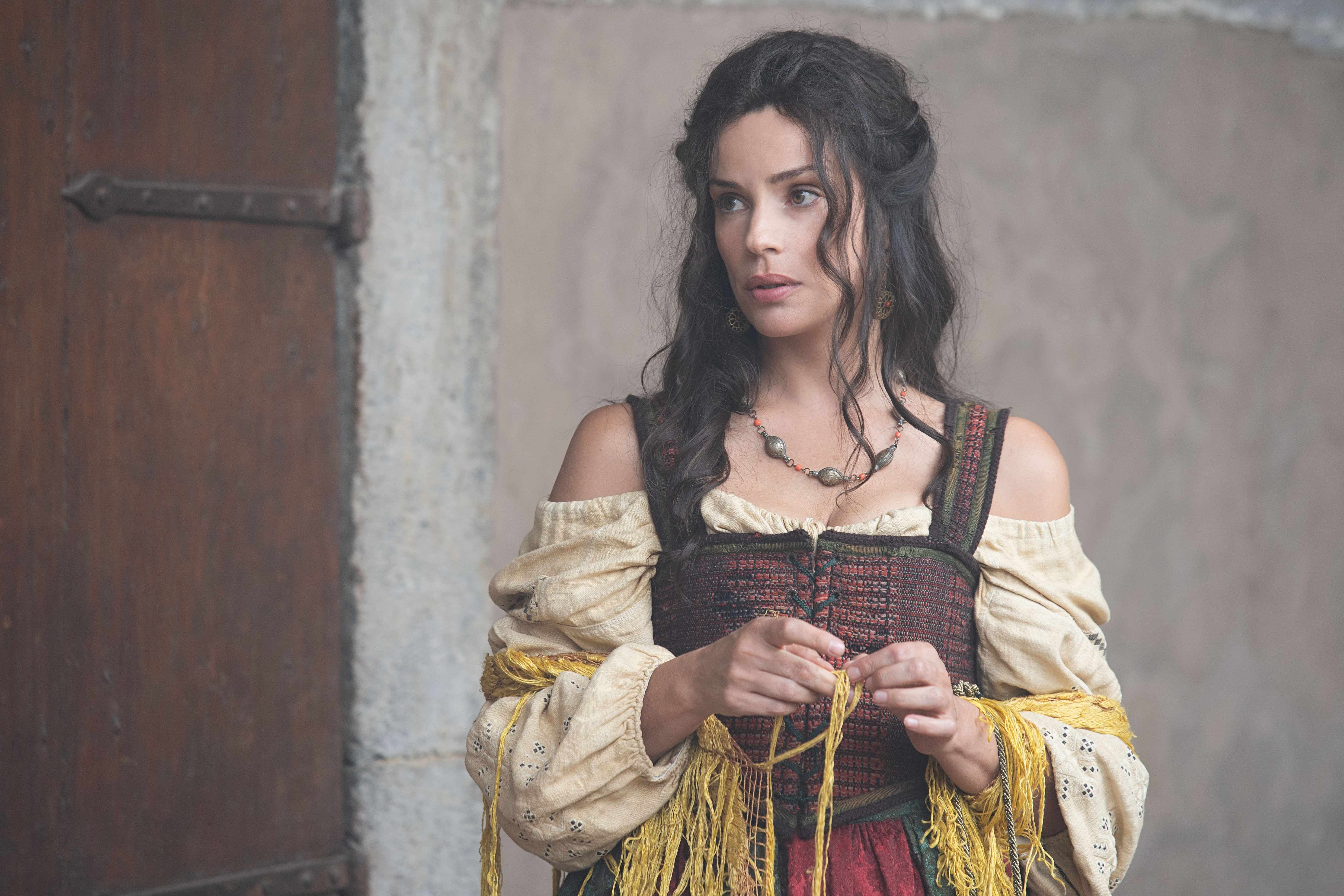
Micaela Ramazzotti (Lena) in The Shadow of Caravaggio | Photo: © Luisa Carcavale
Caravaggio’s shadow comes after fifty years of career and sees the light after four years of study. How was the idea for this film born?
“I came to Rome from a very small village that had neither a cinema nor a theater. I was born as a word maker, I was fascinated by the word, in the best sense of the word, I dreamed of becoming an actor. The desire, the pleasure, the passion of making Caravaggio known has very distant origins. When I was still a student of the National Academy of Dramatic Art “Silvio d’Amico” it was 1968, a revolutionary year almost everywhere. One could perceive the ferment of the young children who wanted to change the world, becoming protagonists and no longer slaves of their fathers. In my opinion, these were extraordinary years. We wanted to be protagonists, we went to the squares, we participated in the demonstrations. In this climate my cultural education takes root. My traveling companions at the Academy were set designers, actors, and many nights we camped in Piazza Campo de ‘Fiori where there was the statue of Giordano Bruno … ”
What happened then?
“Giordano Bruno was for me a sort of bridge to get to art and to painters like Caravaggio. In addition to having unhinged the Aristotelian astronomical system in the scientific field, he was a writer of plays. He fascinated me. And then again in those years, at the suggestion of more cultured friends than me in the field of painting and sculpture, we began to visit Roman churches. And the painter who most transmitted emotions to us precisely for the historical period was Caravaggio who, like him, was also a political painter, perhaps unconsciously “.

Riccardo Scamarcio (Caravaggio) and Isabelle Huppert (Costanza Colonna) in the film L’Ombra di Caravaggio | Photo: © Luisa Carcavale
With a captivating gimmick he resorts to the figure of the Shadow Broker, played in the film by Louis Garrel. He is the only fictional character in the film, but with historical plausibility attributable to the Inquisition. This enigmatic investigator will hold absolute power, life or death, over Caravaggio’s fate. Shadow is, together with light, a fundamental component in Caravaggio’s art. And it is curious how this same shadow that envelops part of this artist’s life tries to shed light on his existence. Who is the Shadow Broker? The Inquisition, the Church, censorship … Or maybe all of us?
“(Laughs) Maybe yes, we are all of us. I wonder how many of those who appreciate Caravaggio today, would have agreed in those days with his choice to transform the last ones into saints and madonnas still venerated today”.
In the film we meet several outsider in addition to Caravaggio. Among these Filippo Neri, played by Moni Ovadia. The Church of Santa Maria in Vallicella, linked to this figure, was, with its derelicts, a forge for Merisi’s art. Here the abject figures were concentrated who, as Caravaggio himself says, “become his god”. What role did Filippo Neri and Vallicella have for the painter?
“Caravaggio is looking for a new light and, as the film tells, he finds it in Vallicella. That’s where he finds his way. Filippo Neri was a great personality and at the time he represented another church that went towards the humble and not towards the nobles. I believe Caravaggio was a great mystic who, especially at the beginning, experienced solitude a lot, and it is perhaps for this reason that he found in Filippo Neri the right person to go forward in this artistic perspective “.
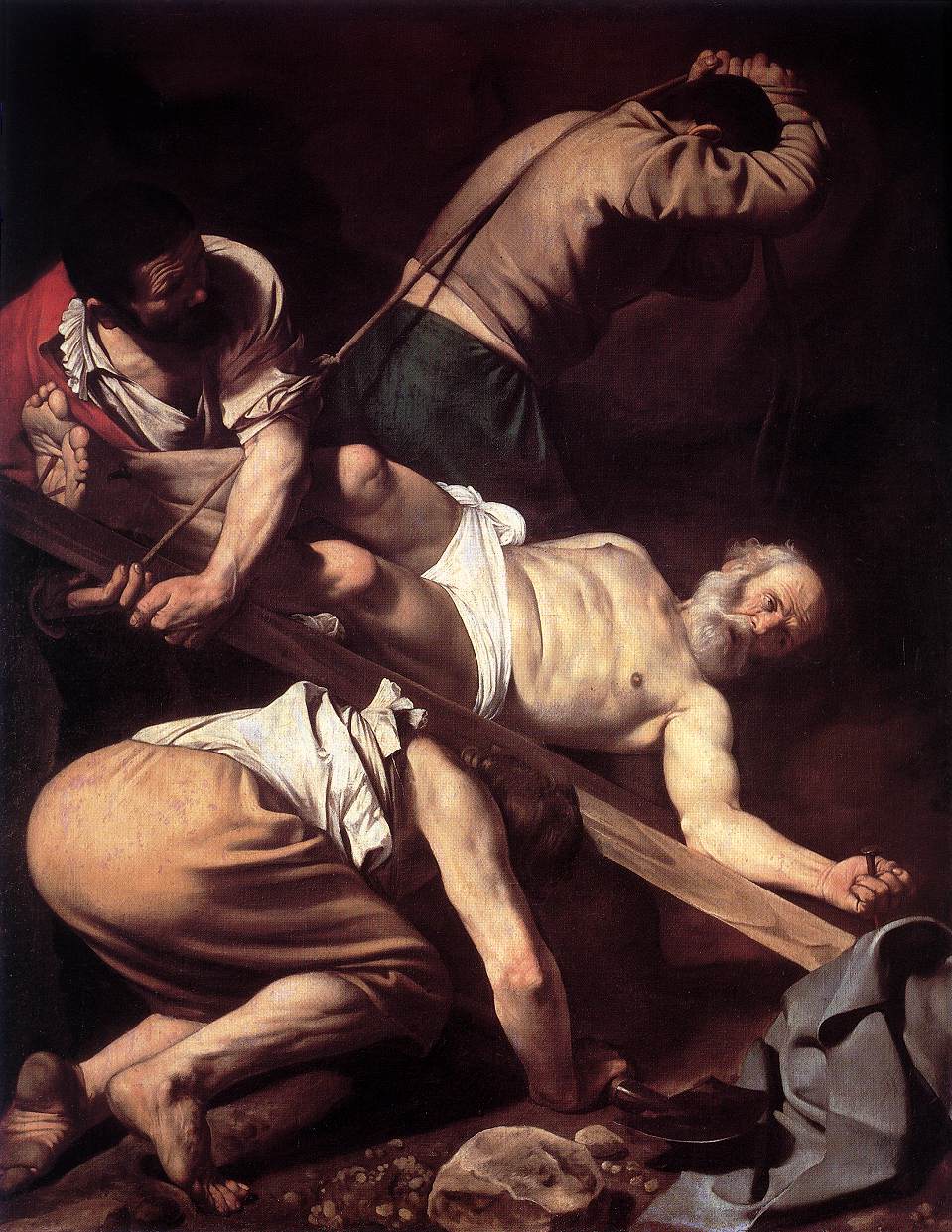
Michelangelo Merisi da Caravaggio, Crucifixion of St. Peter, Cerasi Chapel, Santa Maria del Popolo, Rome
In short, Caravaggio fascinates her …
“I’m reading a beautiful book by Yannick Haenel entitled Loneliness Caravaggio. I started reading it during editing, not when we shot it. Says the author … (Placido actor takes over ed) Contrary to what Poussin may have said, Caravaggio did not come into the world to destroy painting, but Caravaggio loved nothing but painting. And again … Did Caravaggio work hard to beat more serene roads than his art? Wisdom seems foreign to Caravaggio’s emotion … Never has any artist worn out his nerves so much in an attempt to grasp the truth in painting. I like”.
In addition to directing, she plays the Cardinal del Monte, a great patron and collector, but above all the greatest supporter of Caravaggio. In the film we see the cardinal in an unusual guise, in the middle of a spectacular party shot at Villa Aldobrandini. What did you find out about this character?
“When the Shadow asks him how he judges Caravaggio being a man of the church, Cardinal Del Monte replies: Yes, I am a man of the church, but I am also a man who loves art. And this says a lot about his path. After all, her dream was to become pope. He too frequented the Suburra, at night he often participated in parties, but above all inside Palazzo Madama there was a real art school of painting and sculpture. He was the first, through theatrical representations, to invent the opera sung by the castrati, extraordinary voices. He was a little off the ecclesiastical path and many write that he was homosexual. All this prevented him from becoming pope and having discovered Caravaggio was also his condemnation ”.
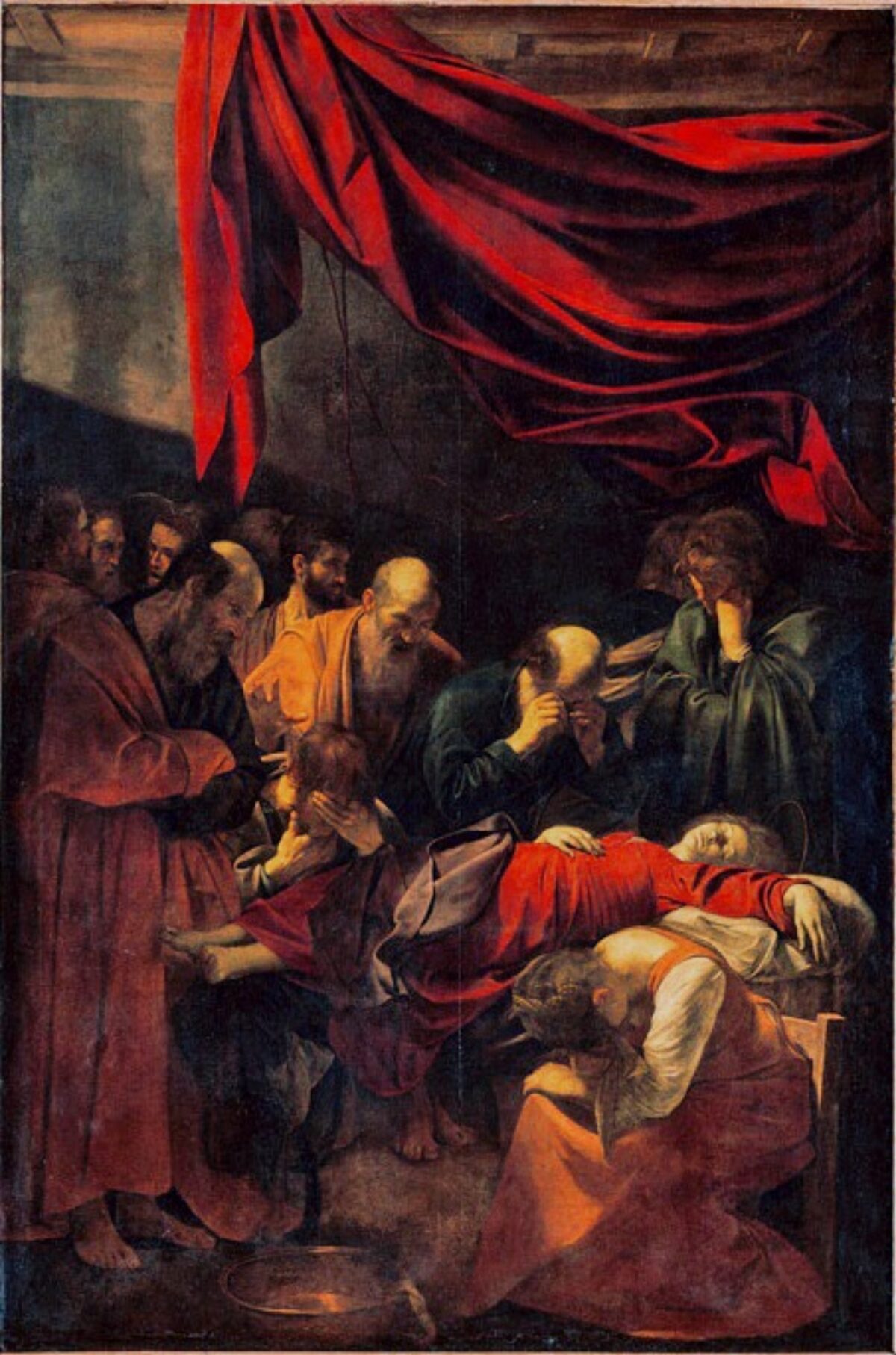
Caravaggio, Death of the Virgin, 1604-1606, Oil on canvas, 245 x 369 cm, Paris, Louvre Museum
What is it that most unites you to Caravaggio besides the name? Which painting does he feel most attached to?
“I think the painting that best represents me is Death of the Virgin. Coming from the theater, I believe that Caravaggio was a great director ”.
In what sense director?
“I am convinced that in his studio, which was located in the Campo Marzio district, he had a real branch of the Vallicella church. To prepare a painting he took days and days, not so much for the search for light, but because he loved to “try out” those actors. This also happens in the theater. I went to a lesson at Strehler’s and he too was rehearsing the staging and only afterwards did he find the light according to the dramaturgical construction of the picture. This was possible because Caravaggio had a knowledge not only of the great Italian painting of that period, but also of the Gospel. In the theater we try to reveal the truth of life and the drama of the human journey. That’s why, from this point of view, I feel very attached to Death of the Virgin“.
One of the most intense moments of the film is the one in which the figures become canvas and Death of the Virgin becomes a real theatrical staging. Can you tell us how this scene was built?
“During the preparation of the film we went to a small church near Rome and we tried for days to try to understand how to represent that moment when Caravaggio arrived at the painting. It is a very contemporary, modern, sparse, quite opulent staging ”.
Let’s talk about the very brave ending, where you take some artistic license … What’s behind this apparently unhistoric end? (No spoiler)
“We thought a lot about this with the writers. Historically there are various assumptions about the end of Caravaggio. Many say he died of malaria, others of consumption, someone else believes he was murdered by cutting off his head. But his body was never found. But above all a death sentence weighed on him, whose principals could be many, from the family of the two Tomassoni to the enemies inside the church ”.
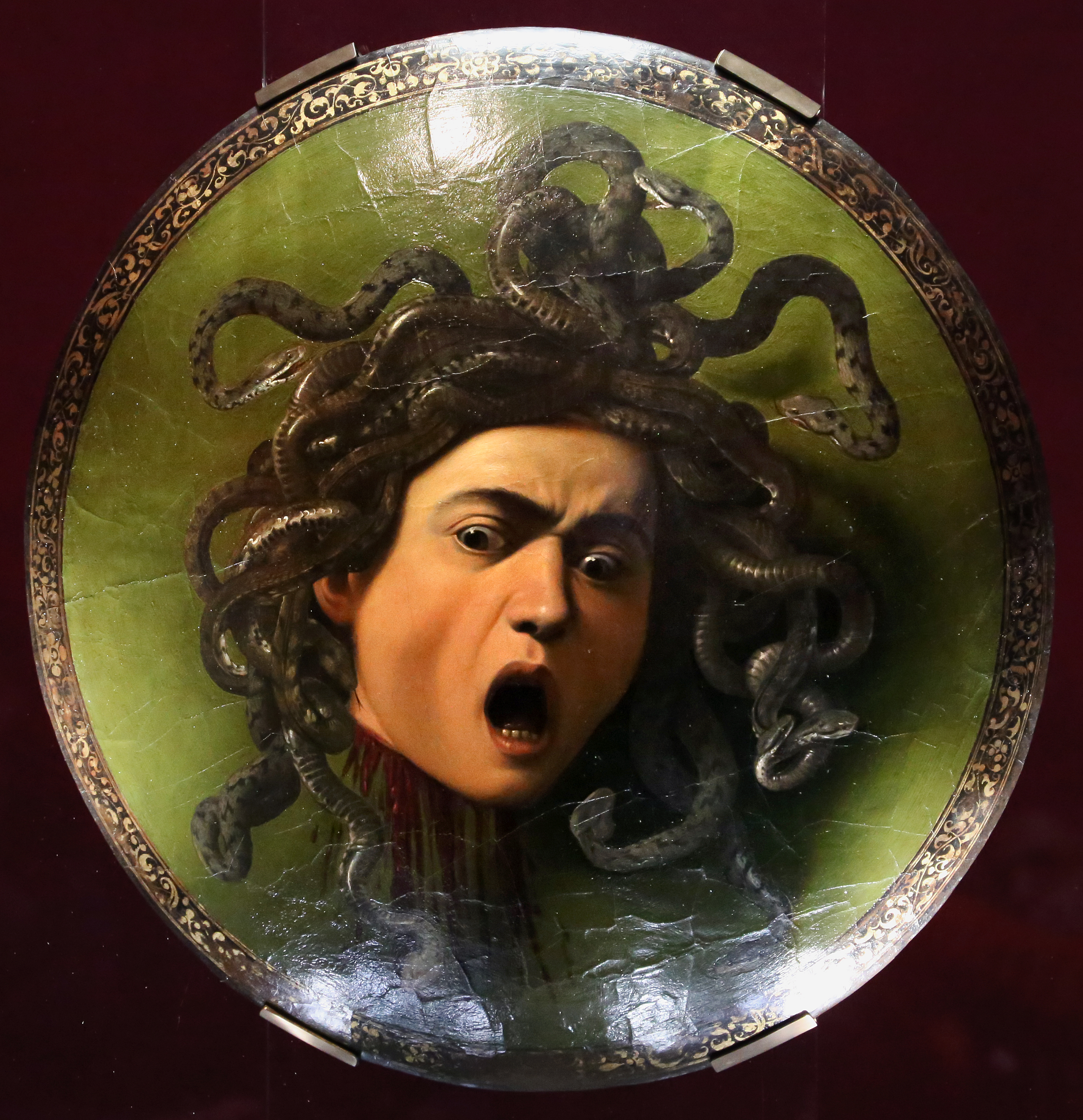
Caravaggio, Shield with the head of Medusa, 1595-1598, Oil on canvas, 60 × 55 cm, Florence, Uffizi Gallery
Where did you shoot? In the churches of Rome you have found closed doors …
“The Roman Curia has not given us the availability to go around in the churches of Rome, or rather in the chapels that house the most famous paintings by Caravaggio. We sent our script to the Curia and they sent it back to the sender saying they couldn’t cooperate. However, knowing Naples very well, where there are churches similar to the Roman Baroque ones, we asked the Neapolitan Curia for advice and some churches entrusted to Neapolitan cultural associations that take care of the decor of these places no longer spiritually active were reported. Also in Naples, the Capodimonte Museum gave us a hand. In the basement of Naples we also set the scene with Giordano Bruno ”.
It’s in Rome?
“The municipality of Rome has granted us the availability of the undergrounds of Castel Sant’Angelo. Thanks to the scenographer Tonino Zera we have reconstructed the Roman Suburra in Cinecittà, but also the workshop of Costantino, the workshop of Cavalier D’Arpino where Caravaggio took his first steps in the Roman period, the Casa di Lena and the studio of Caravaggio ”.
This year marks the hundredth anniversary of Pasolini’s birth, he too, like Caravaggio a outsider, but of the pen. What does Pasolini have in common with his Caravaggio?
“They are two artists who came to Rome and who found the ideal stage in Rome, the Suburra, but also the splendors of the city. Like Caravaggio Pasolini, he frequented the great palaces of Roman culture, but in the end he found his inspiration among the people of the suburbs ”.
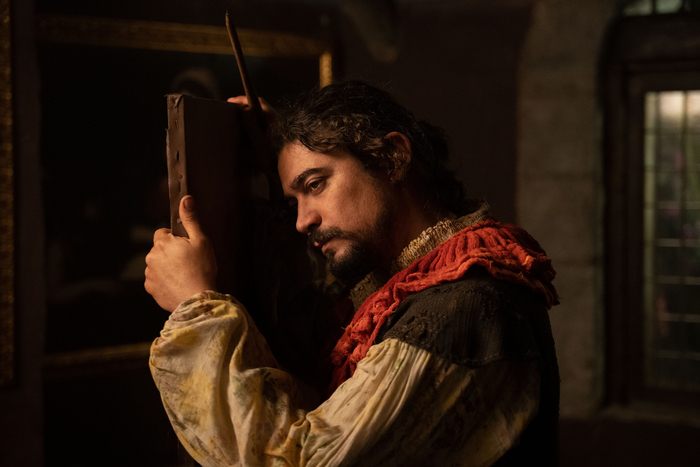
L’Ombra di Caravaggio I Courtesy of 01 Distribution
![]() Read also:
Read also:
• Nine beautiful paintings to be recognized in the film The Shadow of Caravaggio
• The Shadow of Caravaggio
• Riccardo Scamarcio is Caravaggio in the new film by Michele Placido

